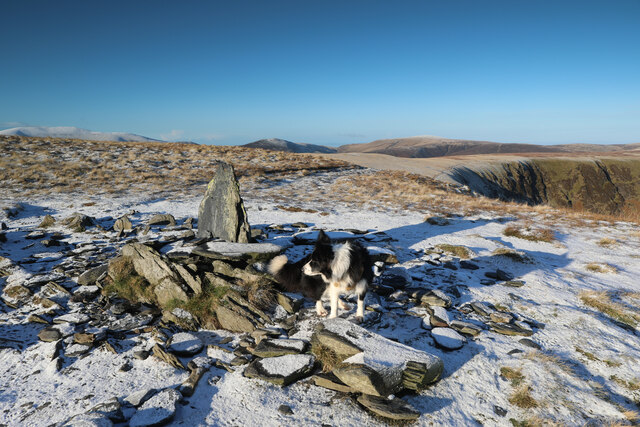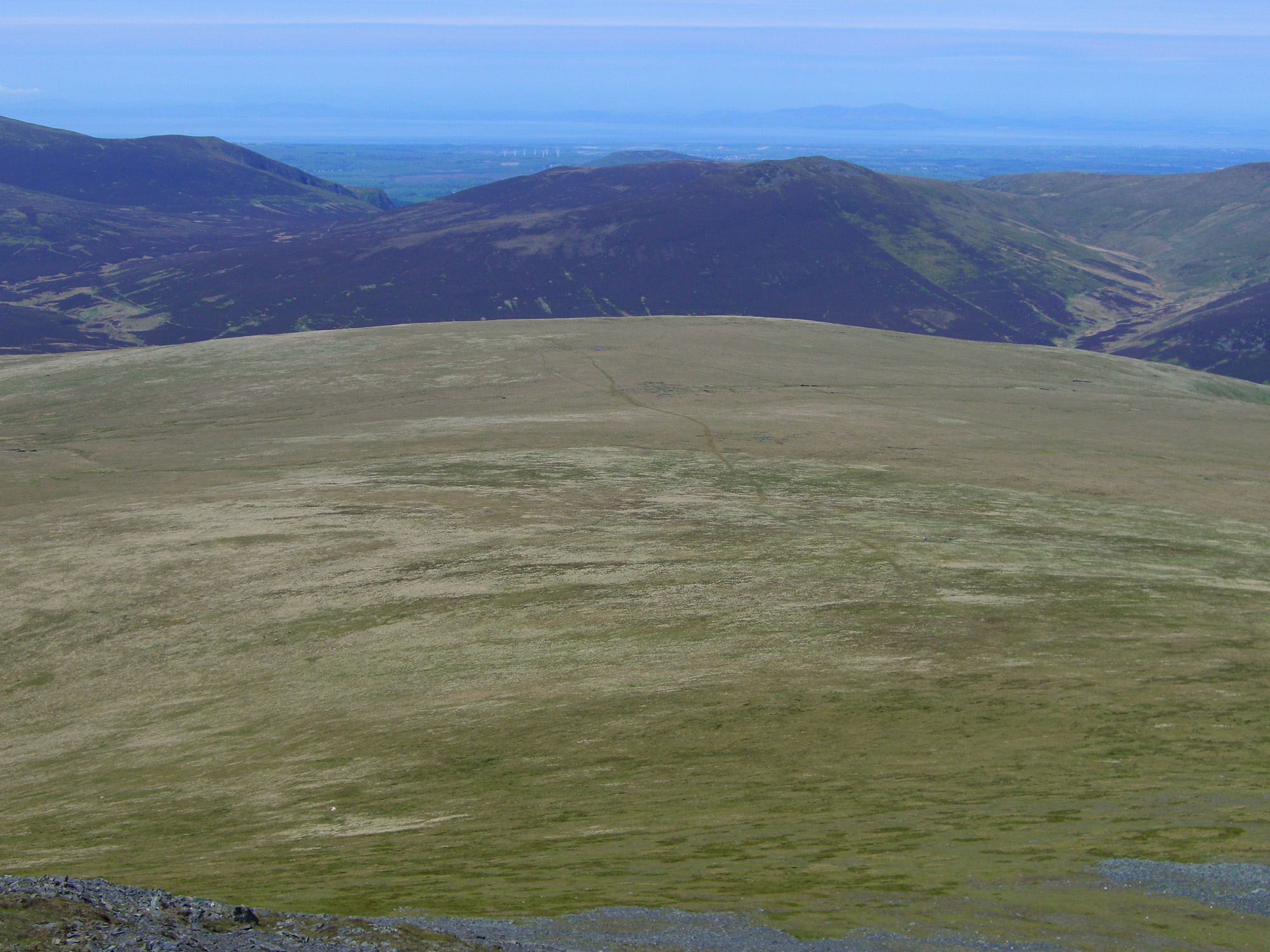Bannerdale Crags
Hill, Mountain in Cumberland Eden
England
Bannerdale Crags

Bannerdale Crags is a prominent and picturesque hill located in the heart of the Lake District National Park in Cumberland, England. Rising to an elevation of 683 meters (2,241 feet), it is classified as a Wainwright Fell, named after Alfred Wainwright, the renowned British fellwalker and author.
Situated in the northern part of the Lake District, Bannerdale Crags is part of a group of hills known as the Northern Fells. Its distinctive silhouette can be seen from miles around, with its rocky crags and steep slopes making it a challenging but rewarding ascent for hikers and mountaineers alike.
The hill is characterized by its rugged terrain, covered in heather and grasses, interspersed with rocky outcrops and scree slopes. The summit provides breathtaking panoramic views of the surrounding fells, including Skiddaw, the fourth highest peak in England. On a clear day, it is even possible to catch a glimpse of the Scottish coastline to the north.
Bannerdale Crags is a popular destination for outdoor enthusiasts, offering a variety of walking routes to suit all abilities. The most common approach is from the village of Mungrisdale, where a well-defined path leads up the eastern flank of the hill. Alternatively, more experienced walkers can tackle the challenging ridge traverse from Bowscale Fell to the south.
Whether scaling its slopes or admiring it from afar, Bannerdale Crags is a notable landmark in the Lake District, attracting visitors with its natural beauty and providing an unforgettable experience for those who venture to its summit.
If you have any feedback on the listing, please let us know in the comments section below.
Bannerdale Crags Images
Images are sourced within 2km of 54.651914/-3.0316642 or Grid Reference NY3329. Thanks to Geograph Open Source API. All images are credited.



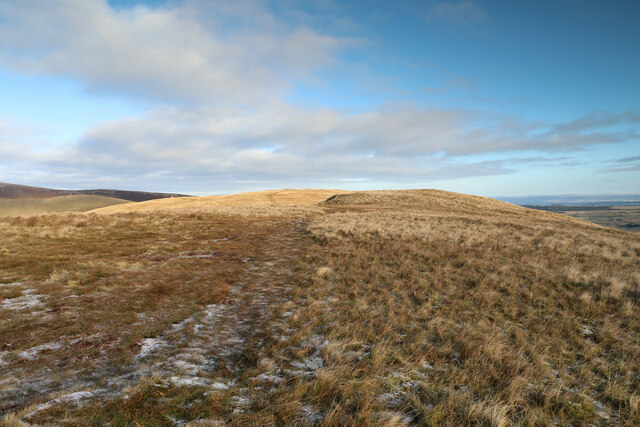



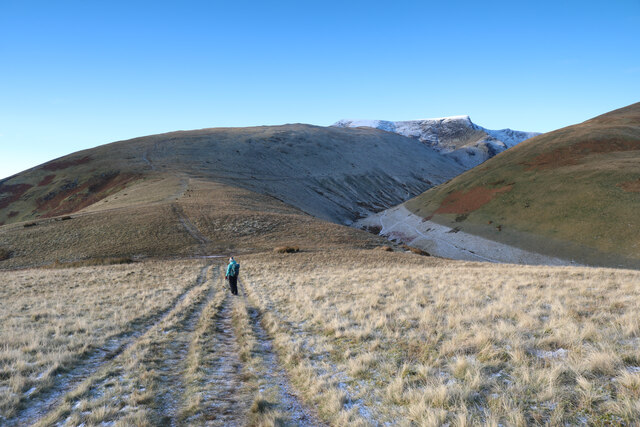




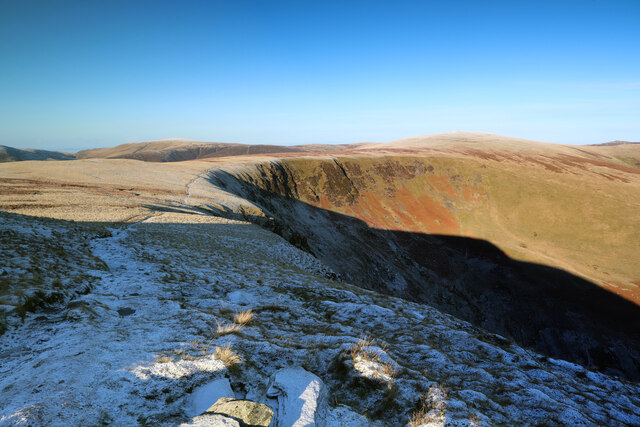


Bannerdale Crags is located at Grid Ref: NY3329 (Lat: 54.651914, Lng: -3.0316642)
Administrative County: Cumbria
District: Eden
Police Authority: Cumbria
What 3 Words
///servants.thud.denoting. Near Keswick, Cumbria
Nearby Locations
Related Wikis
Bannerdale Crags
Bannerdale Crags is a fell in the English Lake District. It stands between Blencathra and Bowscale Fell in the Northern Fells. == Topography == Bannerdale...
Bowscale Fell
Bowscale Fell is a hill in the English Lake District. It rises above the village of Mungrisdale in the Northern Fells. Bowscale Fell stands at the extreme...
Blencathra
Blencathra, also known as Saddleback, is one of the most northerly hills in the English Lake District. It has six separate fell tops, of which the highest...
Souther Fell
Souther Fell is a fell in the English Lake District. It stands to the south of Mungrisdale village in the Northern Fells. It is most famous for the appearance...
Mungrisdale Common
Mungrisdale Common, pronounced mun-grize-dl, with emphasis on grize, is a fell in the English Lake District. Although Alfred Wainwright listed it as one...
Mungrisdale
Mungrisdale is a small village and civil parish in the north east of the English Lake District in Cumbria. It is also the name of the valley in which...
Trout Beck (Glenderamackin)
Trout Beck is a 7.6 miles (12.3 km) long stream or beck in the English Lake District, Cumbria. It rises on the northwestern slopes of Great Dodd, with...
Bowscale
Bowscale is a hamlet and former civil parish, now in the parish of Mungrisdale, in the Eden district, in the county of Cumbria, England. In 1931 the parish...
Nearby Amenities
Located within 500m of 54.651914,-3.0316642Have you been to Bannerdale Crags?
Leave your review of Bannerdale Crags below (or comments, questions and feedback).


